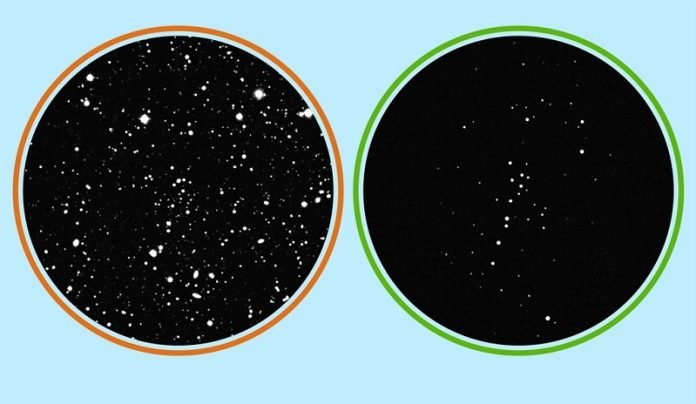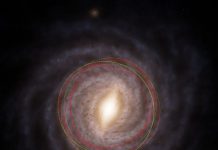
In a groundbreaking achievement, astronomers from Yale University and the University of Victoria in Canada have discovered what could be the smallest and faintest galaxy ever found.
Named Ursa Major III/UNIONS 1 (UMa3/U1), this star system is just a tiny speck in space, located close to the Milky Way.
The system is remarkably small, stretching only 20 light years across, which equals more than 58.7 trillion miles.
It hosts around 60 old stars that are each over 10 billion years old. When compared to even the smallest known dwarf galaxy, UMa3/U1 is 15 times lighter.
The discovery was made possible by powerful telescopes and equipment like the W.M Keck Observatory in Hawai’i and the Canada-France-Hawai’i Telescope.
These tools helped the team study the star system in detail, proving that these stars are not just a random group, but move together through space and share similar chemical compositions.
Currently, scientists are trying to determine if UMa3/U1 is a very small galaxy or just a cluster of stars.
This uncertainty arises because it’s hard to tell if the system contains dark matter, a mysterious and invisible substance thought to form the foundation of the universe.
The presence of dark matter could explain why this tiny system has not been torn apart by the gravitational pull of the Milky Way.
If UMa3/U1 turns out to be a galaxy, it could mean that there are many more such faint galaxies waiting to be discovered.
This would challenge our current understanding of how galaxies and their satellites form and evolve.
The possibility that UMa3/U1 is a dark matter-dominated galaxy is particularly intriguing. More observations with the Keck telescope will help to confirm or deny this exciting theory.
William Cerny, a Yale graduate student involved in the research, mentioned the significance of this discovery.
If it turns out that UMa3/U1 contains a substantial amount of dark matter, it could indicate the presence of numerous other faint star systems that have yet to be detected.
This would be a major breakthrough, suggesting a whole new class of tiny stellar systems that have so far escaped our notice.
This discovery is not just about adding another galaxy or star cluster to our cosmic map.
It challenges and potentially expands our understanding of the universe, suggesting that the vast cosmos may be filled with countless unseen and tiny neighbors orbiting our own galaxy.



